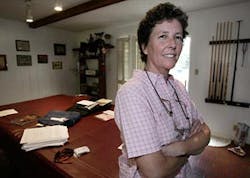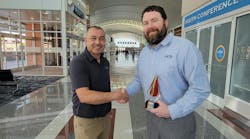DALLAS (AP) -- Air traffic controllers in the Dallas-Fort Worth area routinely covered up errors and their supervisors failed to investigate cases that included airplanes flying too close to each other, federal officials said.
The incidents date back seven years at D-FW Terminal Radar Approach Control, which oversees air traffic at all of the area's airports, including Dallas-Fort Worth International Airport.
The investigation by the Office of Special Counsel, an independent government agency, was prompted by whistle-blower Anne Whiteman, an air traffic controller at the radar approach control.
''It was to the point that I was fearful that two airplanes would collide,'' Whiteman told the Dallas Morning News for a story in Friday's papers. ''I can say that without hesitation.''
Also Friday, the Los Angeles Times reported that airplanes came alarmingly close to each other four times in the last month at Los Angeles International Airport, reviving concerns about safety at the airport, which has an outdated and confusing runway.
And The Boston Globe reported that the National Transportation Safety Board is investigating a near-collision earlier this month of two passenger jets that were mistakenly cleared to take off at the same time on intersecting runways at Logan International Airport.
In Dallas-Fort Worth, Special Counsel Scott Bloch said there was documentation of Whiteman's allegations that supervisors failed to investigate some cases. In other cases, the radar approach control investigated errors but did not notify the Federal Aviation Administration as required, he said.
The investigation also showed the radar approach control underreported errors.
For example, the control center reported two operational errors in the first half of 2004, but the Office of Inspector General for the Transportation Department found that in the last half of 2004, there were 36 errors, including 28 of moderate severity, the report found.
In one of those cases, two airplanes came dangerously close to each other as they neared a runway, according to the report. Each was 90 meters (300 feet) apart vertically and about a half-mile apart horizontally - but federal minimums require vertical distances of 1,000 feet and horizontal distances of three miles when they are within 65 kilometers (40 miles) of Dallas-Fort Worth.
A Dallas-Fort Worth airport spokesman referred all questions to the FAA.
''We take these charges very seriously,'' FAA spokesman Greg Martin said. ''As we became aware of them, we took immediate and thorough action.''
D-FW Terminal Radar Approach Control was put on probation for two years while inspectors conducted checks unannounced. Some employees were reassigned, decertified or placed on probation. It is unclear how many were disciplined.
''Their performance has vastly improved, and they're now in compliance with strict FAA procedures,'' Martin said.





